Mastering the art of cutting fabric is essential for any quilter or sewing enthusiast. With its unique dimensions, a fat eighth presents an excellent canvas for crafting intricate designs.
It is approximately 9 inches by 22 inches and offers versatility and ample material to work with. Learning how to transform a fat eighth into squares and strips efficiently opens up a world of creative possibilities.
This guide will walk you through each step, providing clear instructions and helpful tips to ensure precise cuts.
Whether you’re a seasoned quilter or just starting out, this skill will undoubtedly enhance your ability to bring your fabric projects to life.
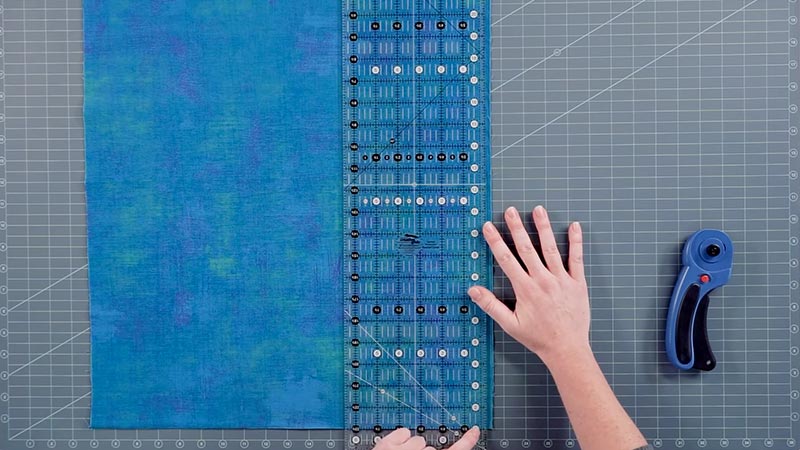
What Is a Fat Eighth?
A fat eighth is a pre-cut piece of fabric commonly used in quilting and crafting. It measures approximately 9 inches by 22 inches, which is typically half the width of a standard fabric bolt.
The name “fat eighth” derives from the fact that it’s one-eighth of a yard of fabric. This cut is beloved by quilters for its versatility, allowing for a wide range of design options.
Its larger size than other pre-cuts like fat quarters provides more flexibility in creating various shapes and patterns. Fat eighths are often chosen for smaller projects or when a diverse selection of fabrics is needed for intricate patchwork designs.
How to Cut a Fat Eighth Into Squares and Strips?
Cutting a fat eighth into squares and strips is a fundamental skill for any quilter or crafter working with fabric. A fat eighth is a piece of fabric that measures approximately 9 inches by 22 inches, making it a versatile choice for various projects.
Whether you’re a seasoned quilter or a beginner, here’s a step-by-step guide on how to cut a fat eighth into squares and strips.
Materials You’ll Need:
- Fat Eighth of Fabric
- Rotary Cutter
- Quilting Ruler (preferably one with a 45-degree line)
- Self-Healing Cutting Mat
- Iron and Ironing Board
Step-by-Step Instructions:
Prepare Your Workspace
Having a well-organized and clutter-free workspace is essential. Ensure your cutting mat is clean and free of any debris.
Make sure you have enough space to lay out your fabric comfortably. Good lighting is crucial for accuracy, so position yourself near a natural light source or use a bright lamp.
Press the Fabric
When your fat eighth has fold lines or wrinkles, using an iron will help smooth out the fabric.
Set your iron to the appropriate temperature for the fabric type and gently press out any creases. Make sure the fabric is completely flat before proceeding.
Square Off One End
Align the short edge of your fabric with a horizontal line on the cutting mat. Take your time to ensure it’s perfectly straight.
When necessary, adjust the fabric until it lines up accurately. Then, with a steady hand, make a small cut at the end of the fabric. This will create a clean, straight edge to work from.
Measure and Cut Squares
Determine the size of the squares you need for your project. Using the quilting ruler, align the desired measurement (e.g., 4 inches) with the straight edge of the fabric.
Double-check that the ruler is straight and secure, then use the rotary cutter to make a clean, even cut. Continue measuring and cutting until you have the desired number of squares.
Measure and Cut Strips
Decide on the width of the strips you want. Measure and mark this width along the long side of the fabric, parallel to the straight edge you created.
Use the quilting ruler to guide the rotary cutter along the marked line. Repeat this process to create as many strips as you need. Remember to maintain consistent measurements for uniform strips.
Check Your Cuts
After cutting, take a moment to inspect your squares and strips. Use a ruler to verify that they meet your desired dimensions.
Pay special attention to edges to ensure they are straight and even. If you notice any discrepancies, use the rotary cutter and ruler to trim as needed for precision.
How Many Squares Can I Cut From a Fat Eighth?
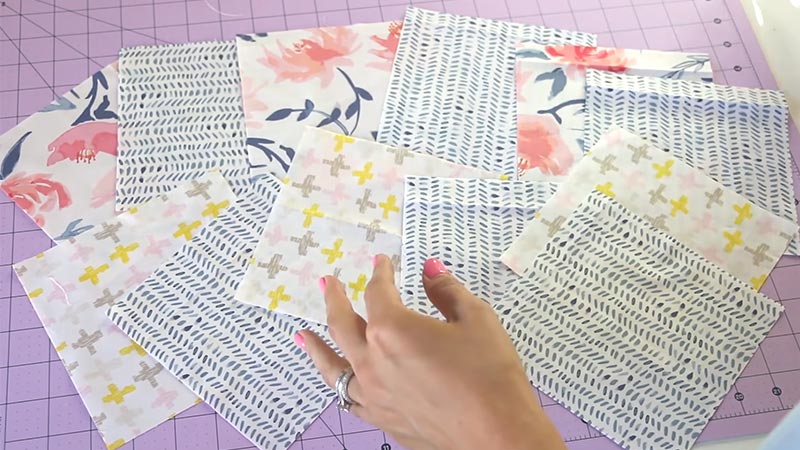
From a standard fat eighth, which measures approximately 9 inches by 22 inches, you can cut a varying number of squares depending on the size of the squares you want to create.
Let’s consider a few examples:
2-inch Squares
- You can get four squares when you cut along the 9-inch side (since 9 inches ÷ 2 inches = four squares).
- When you cut along the 22-inch side, you can get 11 squares (since 22 inches ÷ 2 inches = 11 squares).
3-inch Squares
- You can get three squares when you cut along the 9-inch side (since 9 inches ÷ 3 inches = 3 squares).
- When you cut along the 22-inch side, you can get seven squares (since 22 inches ÷ 3 inches = 7.33, but you’ll round down to 7 squares to maintain consistency).
4-inch Squares
- When you cut along the 9-inch side, you can get two squares (since 9 inches ÷ 4 inches = 2.25, but you’ll round down to 2 squares to maintain consistency).
- When you cut along the 22-inch side, you can get five squares (since 22 inches ÷ 4 inches = 5.5, but you’ll round down to 5 squares to maintain consistency).
How Many Strips Can I Cut From a Fat Eighth?

From a standard fat eighth, which measures approximately 9 inches by 22 inches, you can cut various strips depending on the width of the strips you want to create.
Let’s consider a few examples:
1-inch Strips
- When you cut along the 9-inch side, you can get 9 strips (since 9 inches ÷ 1 inch = 9 strips).
- When you cut along the 22-inch side, you can get 22 strips (since 22 inches ÷ 1 inch = 22 strips).
2-inch Strips
- When you cut along the 9-inch side, you can get 4 strips (since 9 inches ÷ 2 inches = 4.5, but you’ll round down to 4 strips to maintain consistency).
- When you cut along the 22-inch side, you can get 11 strips (since 22 inches ÷ 2 inches = 11 strips).
3-inch Strips
- When you cut along the 9-inch side, you can get 3 strips (since 9 inches ÷ 3 inches = 3 strips).
- When you cut along the 22-inch side, you can get 7 strips (since 22 inches ÷ 3 inches = 7.33, but you’ll round down to 7 strips to maintain consistency).
Some Quilting Projects That Use Squares and Strips From a Fat Eighth
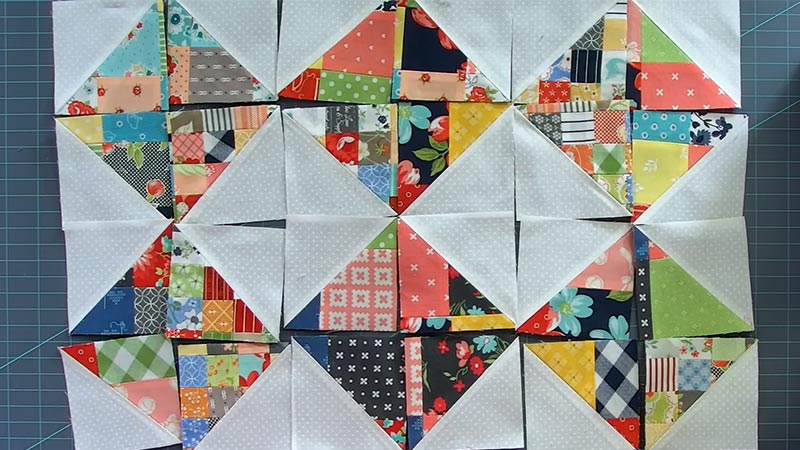
There are numerous quilting projects that you can create using squares and strips cut from a fat eighth of fabric.
Here are some popular ideas:
Patchwork Quilt
One of the most classic quilting projects, a patchwork quilt, can be made entirely from squares cut from fat eighths. Arrange the squares in various patterns and colors to create a visually appealing design.
Table Runner
Use strips from fat eighths to make a stylish table runner. Experiment with different fabric combinations to match your table décor or the changing seasons.
Baby Quilt
Fat eighths are perfect for crafting small baby quilts. Combine squares and strips in soft, baby-friendly colors to create a cozy and adorable quilt for a little one.
Wall Hanging
Design a decorative wall hanging using squares and strips from a fat eighth. You can make themed wall hangings for different seasons or holidays.
Tote Bag
Sew together strips to make the body of a tote bag, and use squares for pockets or embellishments. Fat eighth tote bags are great for carrying your quilting supplies.
Pillow Covers
Create custom pillow covers using fat eighth squares and strips. Mix and match colors and patterns to match your home décor.
Table Mats and Coasters
Craft placemats and coasters by piecing together squares and strips. These can add a personal touch to your dining table.
Quilted Potholders
Make quilted potholders to protect your hands while cooking. Fat eighths can provide a variety of fabrics to make these both functional and attractive.
Common Mistakes to Avoid When Cutting a Fat Eighth
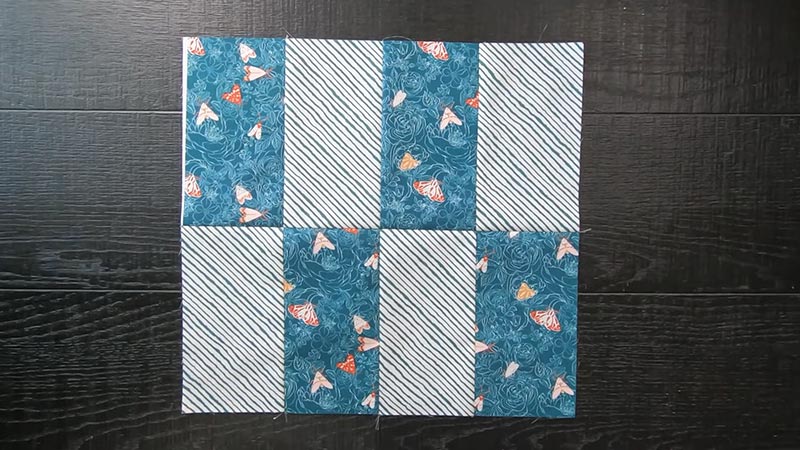
When cutting a fat eighth into squares and strips, there are a few common mistakes to be mindful of.
Avoiding these errors will help ensure precise and accurate cuts:
Not Double-Checking Measurements
Failing to verify your measurements before cutting can lead to inaccuracies. Always measure twice to confirm you have the correct dimensions.
Skipping the Straight Edge
Neglecting to square off one end of the fabric before cutting can result in uneven and crooked strips or squares. Take the time to create a clean, straight edge.
Using Dull Blades
A dull rotary cutter blade can cause the fabric to fray or tear. Make sure to use a sharp blade for clean cuts. Replace the blade when it starts to dull.
Ignoring Grainlines
The fabric has a grainline that affects its stability and stretch. Cutting against the grain can result in misshapen pieces. Pay attention to grainline direction.
Not Securing the Ruler
Failing to secure the quilting ruler properly can lead to shifting during cutting, resulting in imprecise squares and strips. Ensure the ruler is firmly in place before cutting.
Overloading the Cutting Mat
Placing too many layers of fabric on the cutting mat at once can lead to inaccurate cuts. Cut through one layer at a time for clean, precise results.
Rushing the Process
Haste can lead to mistakes. Take your time, especially when making multiple cuts. Precision is key to a successful project.
Not Following a Pattern
When working from a pattern, adhering to the specified measurements and cutting instructions is crucial. Deviating from the pattern can lead to mismatched pieces.
Specific Safety Precautions
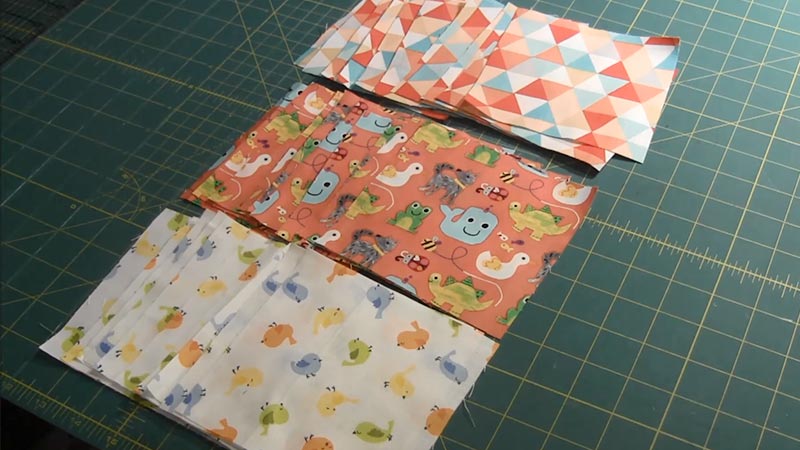
When working with fabric and cutting tools, it’s essential to prioritize safety.
Here are some specific safety precautions to follow when cutting a fat eighth into squares and strips:
Use a Sharp Blade
A sharp blade is essential for clean and controlled cuts. Replace blades as soon as they become dull to avoid accidents.
Dull blades require more pressure, increasing the chances of slipping and injuring yourself.
Engage the Blade Guard
Modern rotary cutters typically come with a retractable blade guard. Ensure it covers the blade when not used to prevent accidental contact with the sharp edge. Never leave the blade exposed.
Cut on a Stable Surface
A self-healing cutting mat provides a stable and safe cutting surface. It protects your work area and prolongs the life of your blades by preventing them from hitting a hard tabletop.
Clear Work Area
Remove any clutter from your work area to prevent distractions and reduce the risk of accidentally cutting other materials. Having a clean workspace improves your focus and accuracy.
Wear Safety Gear
Safety goggles or glasses can protect your eyes from fabric fibers and any potential debris that may be created during cutting. While not always necessary, they can offer an extra layer of protection.
Mind Your Fingers
Keep your fingers well away from the path of the rotary cutter. To do this, use a quilting ruler or straight edge as a guide to maintain a safe distance between your hand and the blade.
Cut Away from Yourself
Always cut away from your body, keeping the blade pointed in the direction opposite to your body. This minimizes the risk of accidentally cutting yourself if the blade slips.
Lock Blades When Not in Use
Some rotary cutters have a locking mechanism to secure the blade when it’s not in use. Engaging this feature ensures that the blade remains safely retracted when stored.
Store Tools Safely
After completing your cutting project, safely store your cutting tools in a designated container or rack for sharp objects. This prevents accidental contact and keeps your tools organized.
Keep Children and Pets Away
Ensure that children and pets are not in the vicinity while you’re cutting fabric. The sharp rotary cutter and the potential for small fabric scraps can harm them.
FAQS
Do I need any special tools for cutting a fat eighth into squares and strips?
You’ll need basic quilting tools, including a rotary cutter, quilting ruler, self-healing cutting mat, and an iron (optional for pressing).
Can I mix and match fat eighths from different fabric collections for my project?
Mixing different fat eighths can result in stunning and unique designs, allowing you to create personalized projects.
What’s the best way to store the leftover fabric scraps from cutting fat eighths?
Consider organizing and storing your fabric scraps by color or size in clear containers or ziplock bags for future use in smaller projects.
Are there any safety precautions I should take when using a rotary cutter?
Always keep the blade guard engaged when not used, and exercise caution to avoid cutting yourself. Make sure your cutting area is clear of obstructions.
Can I wash fat eighths before cutting them into squares and strips?
Washing fabric before cutting is a personal preference. It’s recommended to prewash if you anticipate the fabric shrinking or if you’re concerned about color bleeding.
To Recap
Mastering the art of cutting a fat eighth into squares and strips is a valuable skill for anyone working with fabric. This process empowers quilters and crafters to create intricate designs with precision and efficiency.
By following the steps outlined in this guide, you can transform a fat eighth into versatile pieces that can be incorporated into a wide range of projects. Remember to prioritize safety, double-check measurements, and practice patience.
With dedication and practice, you’ll become adept at achieving clean, uniform cuts, enhancing the quality and beauty of your fabric creations. Embrace this skill, and let your creativity flourish.
Leave a Reply